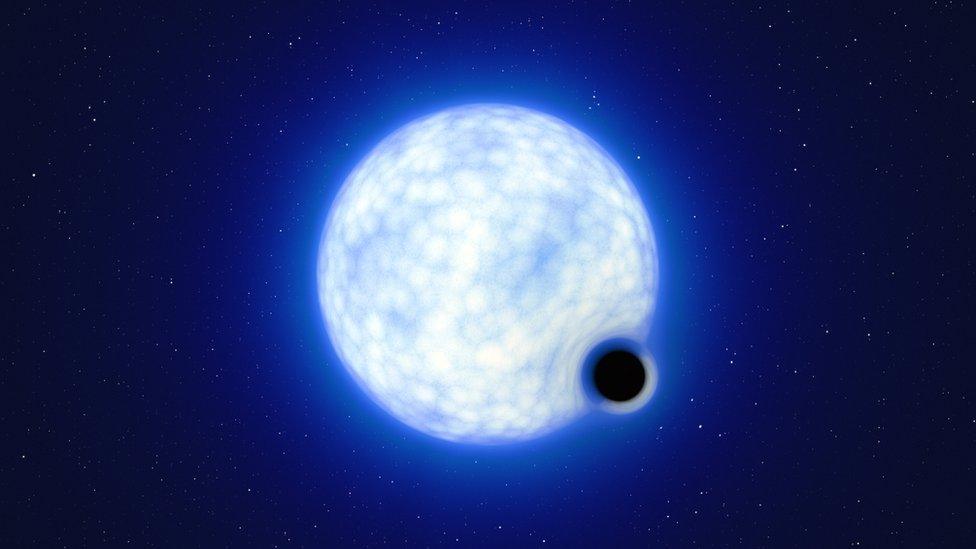Dormant black hole found outside Milky Way galaxy
- Published
- comments

A dormant black hole nine times the mass of the Sun has been discovered outside of our galaxy.
The steller-mass black hole is located in the Large Megellanic Cloud, a galaxy next to the Milky Way.
The black hole was found through six years of observations obtained with the European Southern Observatory's (ESO's) Very Large Telescope (VLT).
Scientists have said it is an "exciting discovery".
Steller-mass black holes are formed when stars reach the end of their lives and collapse.
What is a black hole?
Black holes are pretty epic. They're formed when a dying star collapses inward under the pressure of its own weight. This leads to something called a supernova, a star's extremely powerful explosion.
Black holes are places in space where the pull of gravity is so strong that even light can't escape it! This is what makes them invisible.
In a binary, a system of two stars revolving around each other, leaves behind a black hole in orbit with a luminous companion star.
The black hole is 'dormant' if it does not emit high levels of X-ray radiation, which is how such black holes are typically detected.
The team of international scientists who made this discovery say dormant black holes are particularly difficult to spot because they don't interact with their surroundings.
The newly found black hole, known as VFTS 243, orbits a hot, blue star weighing 25 times the sun's mass.
To find VFTS 243, the team searched nearly 1000 massive stars in one area of the Large Magellanic Cloud, looking for the ones that could have black holes as companions.
The Large Magellanic Cloud, one of our nearest galactic neighbours
The findings were published in the journal Nature Astronomy.
Professor Paul Crowther, Head of the Department of Physics and Astronomy, and Professor of Astrophysics at the University of Sheffield, said: "It's a very exciting discovery."
He added although there are a number of possible 'dormant' black holes, the VFTS 243 is the first to be clearly "detected outside our galaxy".
The discovery was made by a team which usually checks out if a black hole discovery is genuine.
"For the first time, our team got together to report on a black hole discovery, instead of rejecting one," said study lead Tomer Shenar, from Amsterdam University, in a statement.
The team hopes the discovery will lead to more understanding about how black holes are formed.
- Published20 May 2020
- Published14 October 2020
